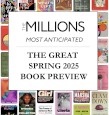Gooey chocolate, juicy burgers, gobs of melting cheese—while it may be impossible to define the term food porn, “you know it when you see it.” And at the November 30 Piglet Party at 92Y Tribeca, which celebrated the Food52-sponsored tournament of cookbooks, a panel of food writers assembled to discuss the weighty matter of food porn in cookbooks and magazines, and on the web.
Former New York Times restaurant critic and Born Round author Frank Bruni moderated the discussion, which ultimately didn’t settle the issue (as it were), but certainly entertained the crowd of foodies, cookbook fans, and food writers. Ben Leventhal, creator of Eater.com, said Eater banned food porn, calling it “a distraction” and defining it as “images that fetishize food on a plate.” Deb Perelman, who writes the popular food blog Smitten Kitchen (which is filled with questionable--and mouth-watering--food photography) and has a cookbook coming out in 2012, used words like “fluid” and “dripping” to describe food porn images. Frank Falcinelli, whose The Frankies Spuntino Kitchen Companion & Cooking Manual (coauthored with Frank Castronovo) largely eschews glossy photos in favor of line drawings, said food porn is “an overindulgence in presentation.” But that doesn’t have to be lobster or filet mignon: “it could just be a hot dog on a bun.” Falcinelli admitted he takes a lot of photographs of food he grows and cooks, and has found himself whipping out his camera because he is, to cite one example, “in love with the turnip."
The panel spent a good chunk of time naming the offenders: Leventhal said Saveur probably prints the most indulgent photos out of all today’s food magazines, although judging by the slide show presentation that preceded the discussion—with images assembled by the New York Times Magazine—Vogue is up there, too. Archival photos of food from the fashion mag dominated the slide show, which culminated in a hilarious ad for Frigidaire’s “Kitchen of Tomorrow” from 1956.
Falcinelli said that out of some recent culinary films, the food scenes in Julie & Julia qualified as food porn (much more so than Ratatouille, a film he said he’s seen "a hundred times"). And the guilty New York restaurants? “WD-50 and Eleven Madison Park are probably triple-X,” said Leventhal.
This all begged the inevitable question, raised by Christopher Hirsheimer of Canal House Cooking: why is food porn a bad thing? And why is it okay to write about it but not photograph it? It’s just too bad Hugh Hefner wasn’t present; perhaps he'd have an answer.








